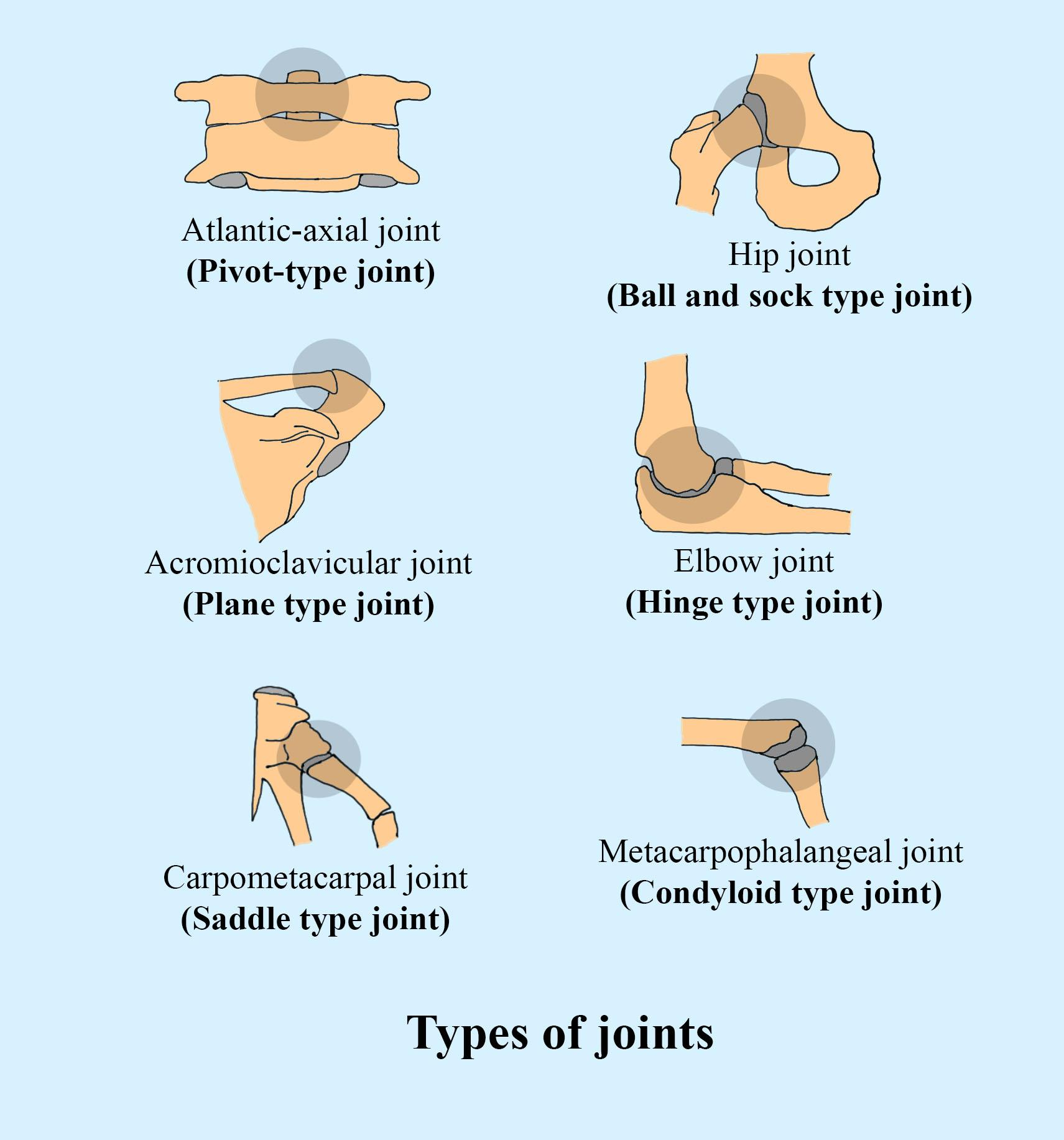
Joint between humerus and radio-ulna is
(a)Ball and socket
(b)Pivot
(c)Gliding
(d)Hinge
Answer
569.7k+ views
Hint: It is a common type of synovial joint comprising the joints of the ankle, elbow, and knee. They are formed between two or more bones where to flex or extend, the bones can only move along one axis.
Complete answer:
A hinge joint is a popular synovial joint class that includes the joints of the ankle, elbow, and knee. Between two or more bones, hinge joints are formed where the bones can only travel along one axis to fold or stretch. The elbow is a more complex hinge joint that forms between the upper arm humerus and the forearm ulna and radius.
The Interphalangeal joint of the hand and those of the foot and the joint between the humerus and ulna are the best examples of ginglymoid joints. Knee joints and ankle joints are less common since, in some places of the leg, they allow a slight degree of rotation or side-to-side motion. The largest hinge joint in the human body is the knee.
Additional Information:
A pivot joint is a synovial joint in which the ends of two bones cross, one end being a central bony cylinder and the other end being a bone and ligament ring (or ring-like structure). The cylinder rotates inside the ring in some joints. The ring rotates around the cylinder in other joints.
A gliding joint is a common type of synovial joint formed between bones that meet on flat or nearly flat articular surfaces, also known as a plane joint or planar joint. Gliding joints allow the bones to slide up and down, left and right, and diagonally, past each other in either direction along the plane of the joint.
A type of synovial joint in which the ball-shaped surface of one rounded bone fits into the cup-like depression of another bone is the ball and socket joint (or spheroid joint). The distal bone is able to move along an infinite number of axes that have one core in common.
So, the correct answer is ‘hinge joint’.
Note: The most common type of joint in the body is the synovial joints. The articular surfaces of bones are coated with smooth articular cartilage at synovial joints. This allows the bones of a synovial joint the ability to move smoothly against each other, providing greater mobility of the joint.

Complete answer:
A hinge joint is a popular synovial joint class that includes the joints of the ankle, elbow, and knee. Between two or more bones, hinge joints are formed where the bones can only travel along one axis to fold or stretch. The elbow is a more complex hinge joint that forms between the upper arm humerus and the forearm ulna and radius.
The Interphalangeal joint of the hand and those of the foot and the joint between the humerus and ulna are the best examples of ginglymoid joints. Knee joints and ankle joints are less common since, in some places of the leg, they allow a slight degree of rotation or side-to-side motion. The largest hinge joint in the human body is the knee.
Additional Information:
A pivot joint is a synovial joint in which the ends of two bones cross, one end being a central bony cylinder and the other end being a bone and ligament ring (or ring-like structure). The cylinder rotates inside the ring in some joints. The ring rotates around the cylinder in other joints.
A gliding joint is a common type of synovial joint formed between bones that meet on flat or nearly flat articular surfaces, also known as a plane joint or planar joint. Gliding joints allow the bones to slide up and down, left and right, and diagonally, past each other in either direction along the plane of the joint.
A type of synovial joint in which the ball-shaped surface of one rounded bone fits into the cup-like depression of another bone is the ball and socket joint (or spheroid joint). The distal bone is able to move along an infinite number of axes that have one core in common.
So, the correct answer is ‘hinge joint’.
Note: The most common type of joint in the body is the synovial joints. The articular surfaces of bones are coated with smooth articular cartilage at synovial joints. This allows the bones of a synovial joint the ability to move smoothly against each other, providing greater mobility of the joint.

Recently Updated Pages
The number of solutions in x in 02pi for which sqrt class 12 maths CBSE

Write any two methods of preparation of phenol Give class 12 chemistry CBSE

Differentiate between action potential and resting class 12 biology CBSE

Two plane mirrors arranged at right angles to each class 12 physics CBSE

Which of the following molecules is are chiral A I class 12 chemistry CBSE

Name different types of neurons and give one function class 12 biology CBSE

Trending doubts
One Metric ton is equal to kg A 10000 B 1000 C 100 class 11 physics CBSE

Explain zero factorial class 11 maths CBSE

What is 1s 2s 2p 3s 3p class 11 chemistry CBSE

Discuss the various forms of bacteria class 11 biology CBSE

State the laws of reflection of light

Difference Between Prokaryotic Cells and Eukaryotic Cells




